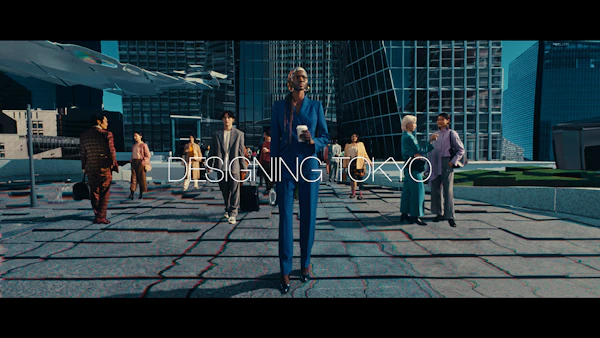Toranomon Hills Business Tower
虎ノ門ヒルズ ビジネスタワー
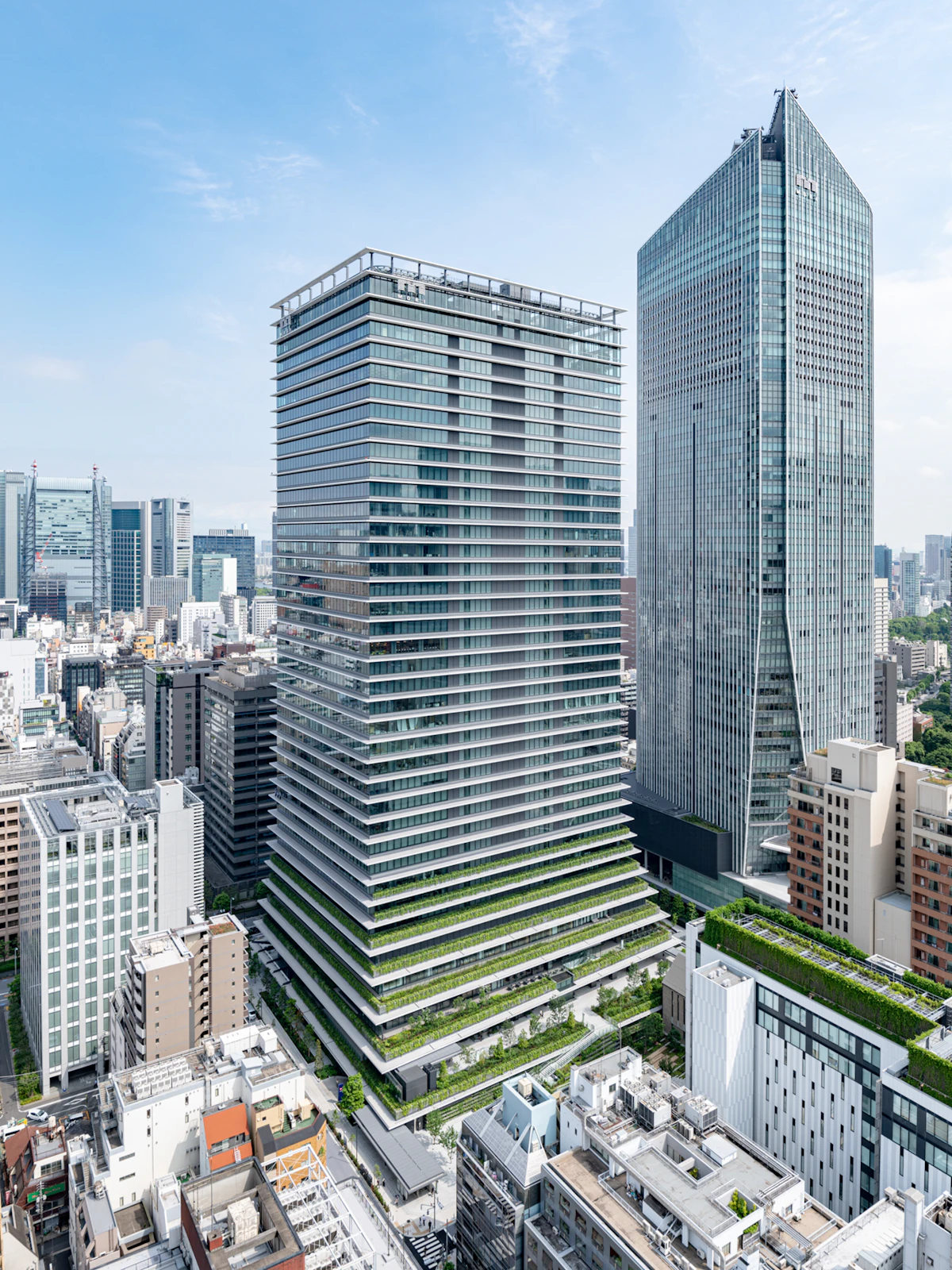
History開発経緯
Part of the Toranomon 1-chome category 1 urban redevelopment project, Toranomon Hills Business Tower is a redevelopment project carried out by Mori Building and around 30 other property owners. Mori Building has built office buildings primarily in the Shinbashi-Toranomon district where its headquarters were located and operated an office building leasing business for its “Number Buildings” (buildings given numbers instead of names) since the late 1950s. Redevelopment of the district faced many challenges. Many of the buildings—including Toranomon 10 Mori Building and Toranomon 12 Mori Building—were constructed under old earthquake standards or had deteriorated from age. Moreover, rebuilding individual structures was difficult due to narrow roads.
In 2009, we started holding study sessions with five property owners. In 2015, we obtained approval from the prime minister for a zoning plan in the National Strategic Special Zone coinciding with the building of the new train station, Toranomon Hills Station, and the Toranomon Station Front District category 1 urban redevelopment project. Construction of the tower was completed in January 2020.
In June 2020, Toranomon Hills Station on the Tokyo Metro Hibiya Line opened, along with the entire underground passage that was built as part of the project. Thanks to the cooperation and support of the property owners and other stakeholders, the project was competed in the unprecedented speed of only four and a half years from the time the city plan was approved.
Timeline
December 2010 | Preparations Committee is established |
October 2014 | Zoning plan for National Strategic Special Zone is drafted |
November 2014 | City plan draft is submitted |
June 2015 | Zoning plan for National Strategic Special Zone is approved |
July 2015 | City plan is approved |
January 2016 | Establishment of Redevelopment Association is approved |
June 2016 | Rights-conversion plan is approved |
February 2017 | Construction commences |
January 2020 | Construction is completed |
Project Overview計画概要
This district was home to offices, residences, restaurants, kimono shops that had been established in the Edo Period, and Shiba Church of the United Church of Christ in Japan, which has been active in the area since 1930s. Also located here were Number Buildings like 10 Mori Building, which Mori Building built during Japan’s period of rapid economic growth as a joint enterprise with the then-property owner. This was the second time for the Number Buildings to be redeveloped, or “re-redeveloped.”
Two facilities were built: a 36-story high-rise tower (Toranomon Hills Business Tower) and 3-story church with a 10-meter ceiling (Shiba Church of the United Church of Christ in Japan). The high-rise tower includes large-scale office space with a total rental area of 96,000 m2, a 7,600-m2 retail facility, and the ARCH incubation center.
Narrow roads in the district were removed and five separate blocks were consolidated into one 1-hectare block. A park (Saio Park), which the area was lacking, was also established. On the first floor, a bus terminal was built connecting Toranomon Hills Station on the Tokyo Metro Hibiya Line and Toranomon Station on the Ginza Line by a 370-meter-long underground pedestrian walkway. Tokyo BRT, which connects central Tokyo and the waterfront area, and an airport-bound bus run services from the bus terminal. A pedestrian deck connected to the surrounding area was also built, and Toranomon’s transport hub function was enhanced as part of the Long-Term Vision for Tokyo, turning the district into a new “Gateway to Tokyo.”
Facility Overview施設概要
Offices
Offices—from the 5th to 36th floors—provide a total working space of some 96,000m². Standard leasable space on each floor is about 3,000m² and features expansive pillar-free spaces. Floor-to-ceiling windows ensure naturally lighted open-air spaces and support flexible office layouts to accommodate diverse working arrangements. Special areas are provided on each floor for the storage of supplies in case of a natural disaster or other emergency.
An underground pedestrian walkway connects the Tower directly to the Toranomon Hills Station on the Hibiya Subway Line and the existing Toranomon Station on the Ginza Subway Line. A bus terminal on the first floor is the departure and arrival point for airport limousine buses and the Bus Rapid Transit service connecting central Tokyo and waterfront area. In addition, once Loop Road No. 2 running under Toranomon Hills is fully opened, it will be possible to reach Haneda Airport by road in 25 minutes. Such convenience is ideal for global companies.
All leasable space has already been leased to Japanese and foreign companies representing a wide range of industries. With the launch of Toranomon Hills Business Tower, the total office area of the Toranomon Hills complex has expanded to approximately 195,000m².
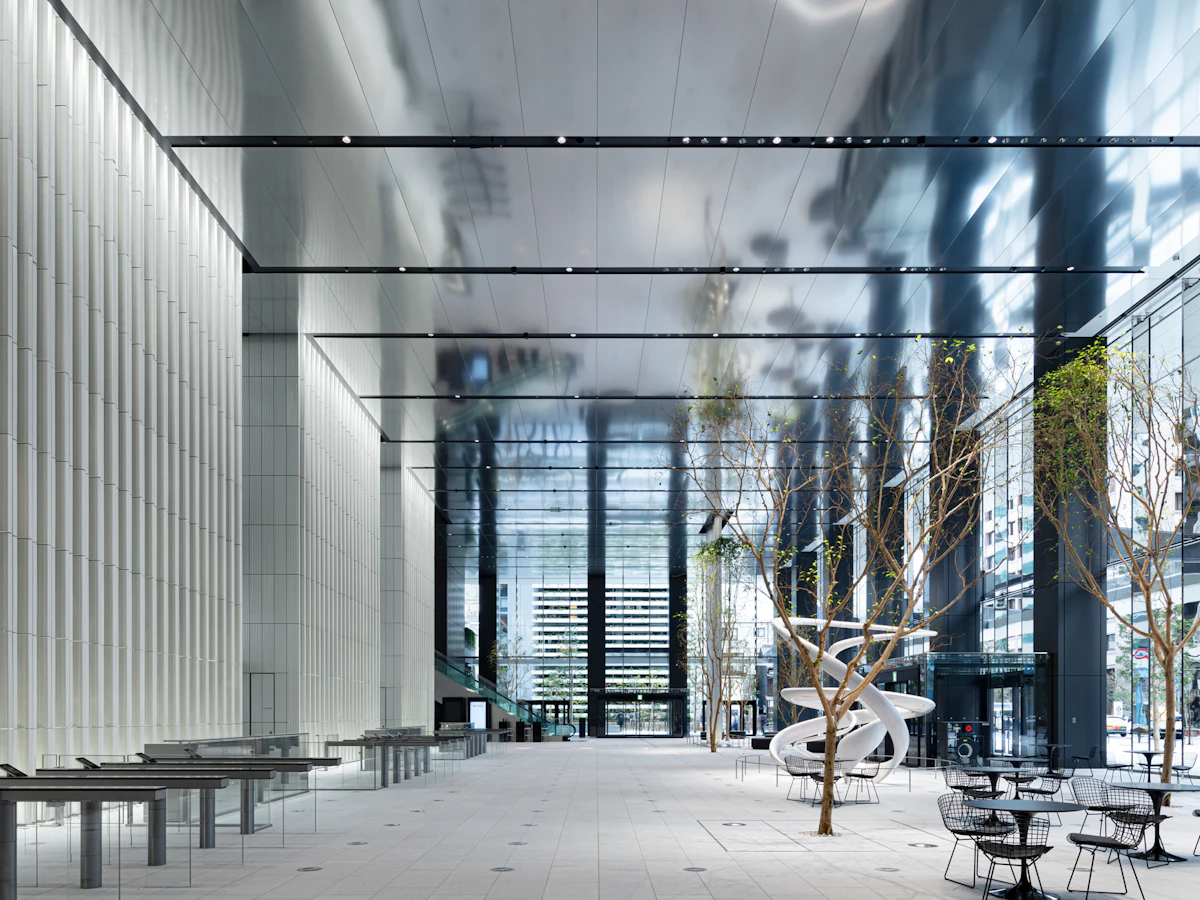
ARCH Toranomon Hills
The 3,800m² ARCH incubation center on the fourth floor is a new business-creation base in the Toranomon Hills, designed to serve as global business center.
Its facilities include meeting rooms, co-working spaces, a training room, cafe and lounge. U.S. Silicon Valley-based venture capital firm WiL, which supports large enterprises in new business creation as well as nourishing and investing in venture companies, helped to plan the facility and participating in its ongoing operation.
The center offers a range of support services, including various sector know-how, educational programs and enlightenment events. In addition, consultants experienced in creating new business opportunities at large enterprises help facilitate collaboration between resident companies with the aim of supporting new business development.
The incubation center is aimed at becoming a key base for Japan's unique innovation ecosystem. In particular, it enables residents to leverage the abundant resources of established large enterprises, including their human resources, goods, capital and know-how. It also supports initiatives for internal business reforms as well as new business creation.
By linking with various international networks, ARCH is destined to become a bridge between diverse industries and enable innovation originating in Tokyo to permeate throughout Japan and overseas.
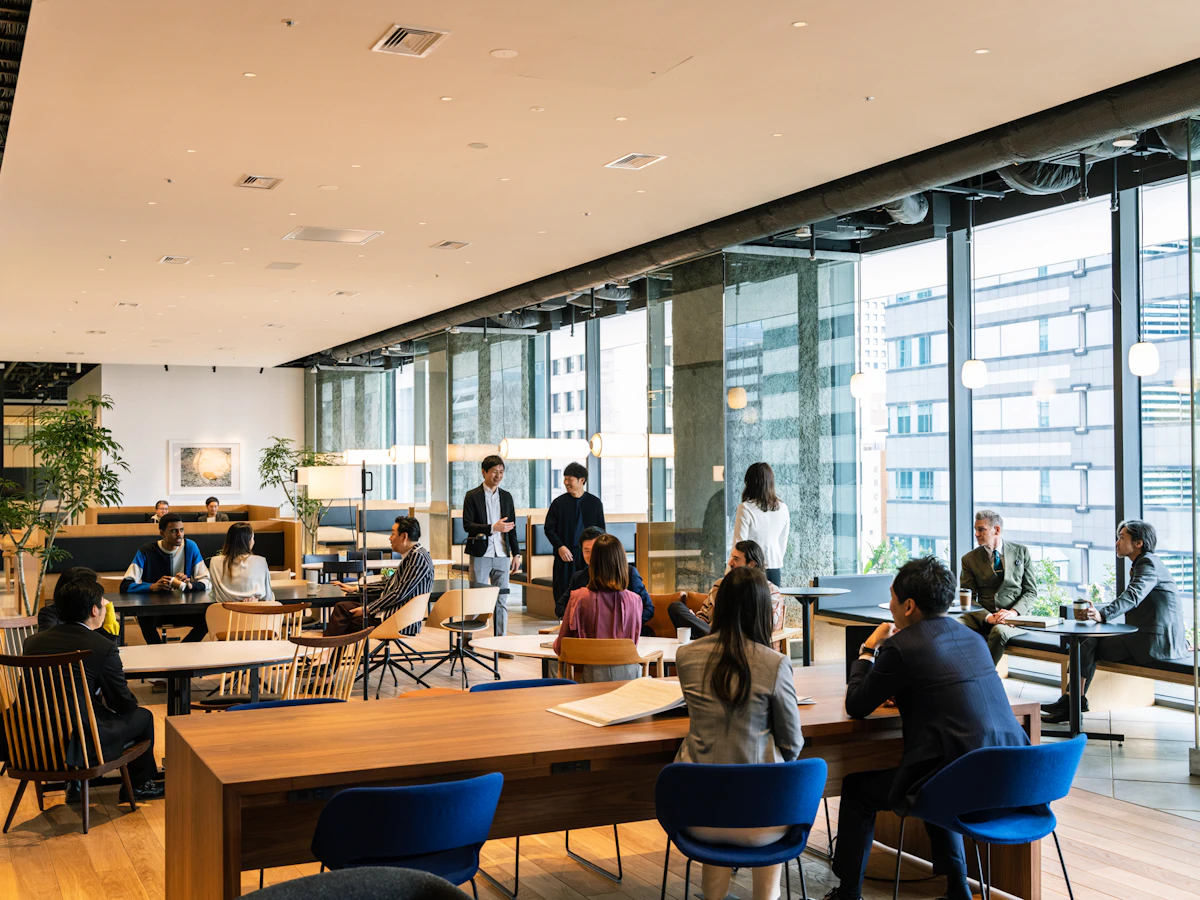
Retail Facilities
From the first basement floor to the third floor, 59 retail facilities occupying a total area of some 7,600m² offer food, beverages and other products and services to support global player’s lifestyles. The first basement floor features an area’s first upscale supermarket and casual restaurants. The first ground floor is populated with stores selling Japanese sweets, candies and wines suitable as Toranomon Hills gourmet souvenirs. The second floor hosts retailers selling everyday fashion items and miscellaneous goods. The third floor, in addition a wide range of restaurants for lunch and dinner, is the home of Toranomon Yokocho, a landmark dining area featuring a rich variety of famous restaurants from throughout Tokyo.
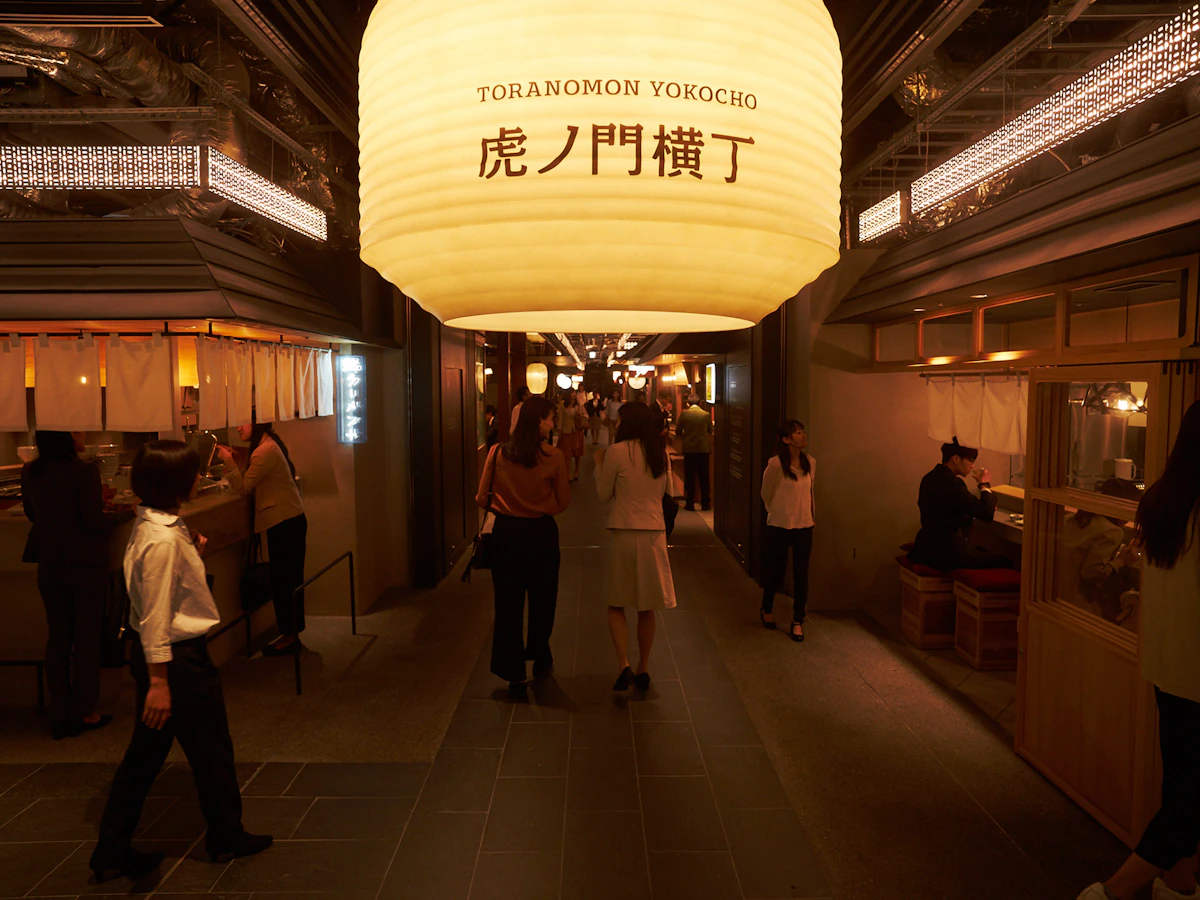
Bus Terminal
On the first floor, a bus terminal measuring some 1,000m² is directly accessible on foot to Toranomon Hills Station on the Hibiya Subway Line and Toranomon Station on the Ginza Subway Line. The terminal is the departure and arrival point for airport limousine buses and the Bus Rapid Transit service connecting the city center and waterfront area. On the second floor, a pedestrian deck connects the Business Tower and Toranomon Hills Mori Tower. Together with Shintora-dori Avenue integrated with Loop Road No. 2, the pedestrian network connects the entire Toranomon Hills. In addition, when Loop Road No. 2 is fully opened it will provide extra-easy access to Haneda Airport, further cementing Toranomon Hills as the newest “Gateway to Tokyo” connecting central Tokyo with the world.
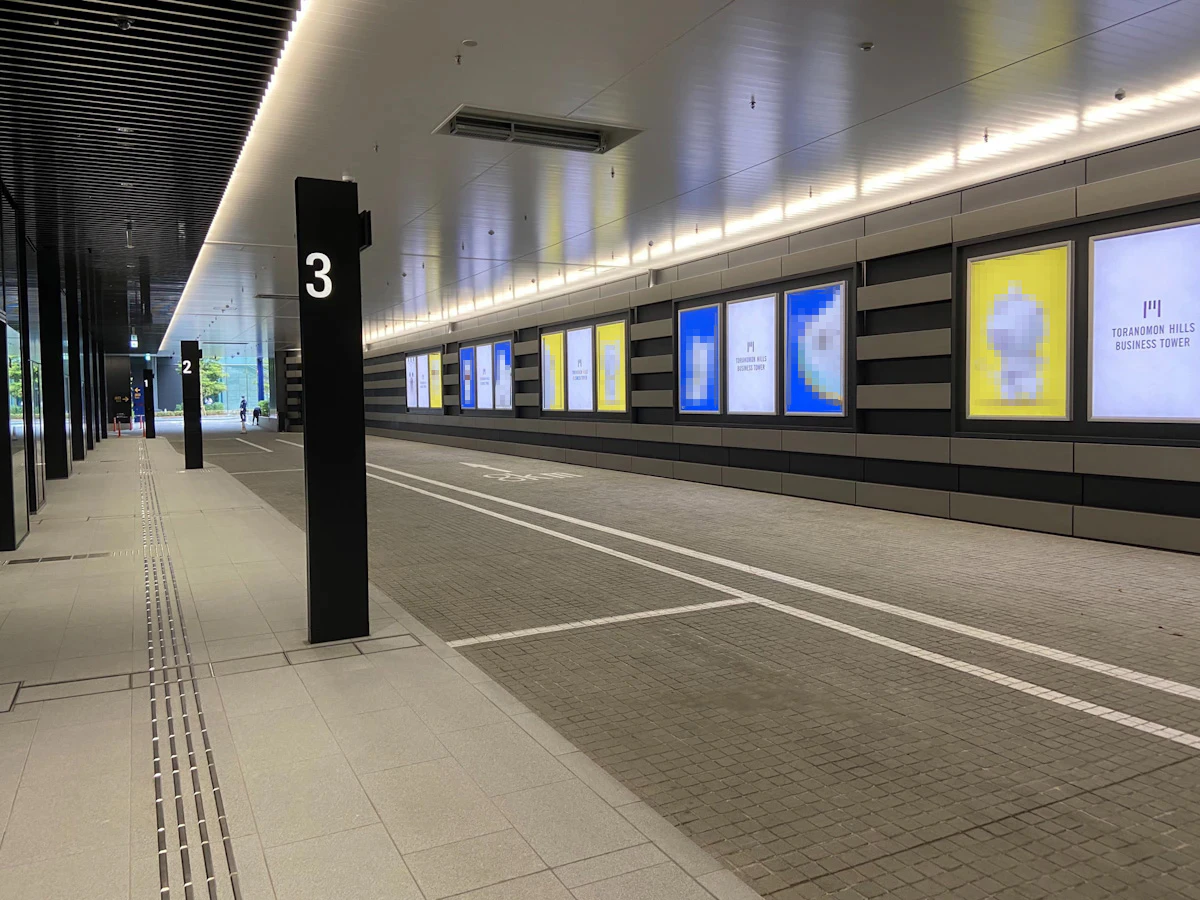
Architectural Design and Public Art
The Business Tower’s exterior design was created by German architect Christoph Ingenhoven (ingenhoven associates). The building is harmonized with the existing Toranomon Hills Mori Tower and serves as an international business hub. The retail facilities and ARCH incubation center, designed by Masamichi Katayama (principal of Wonderwall inc.), are highly modern and yet reflect the history and traditions of Toranomon.
Public art works by three globally noted Asian contemporary artists are displayed at office entrances and additional venues.
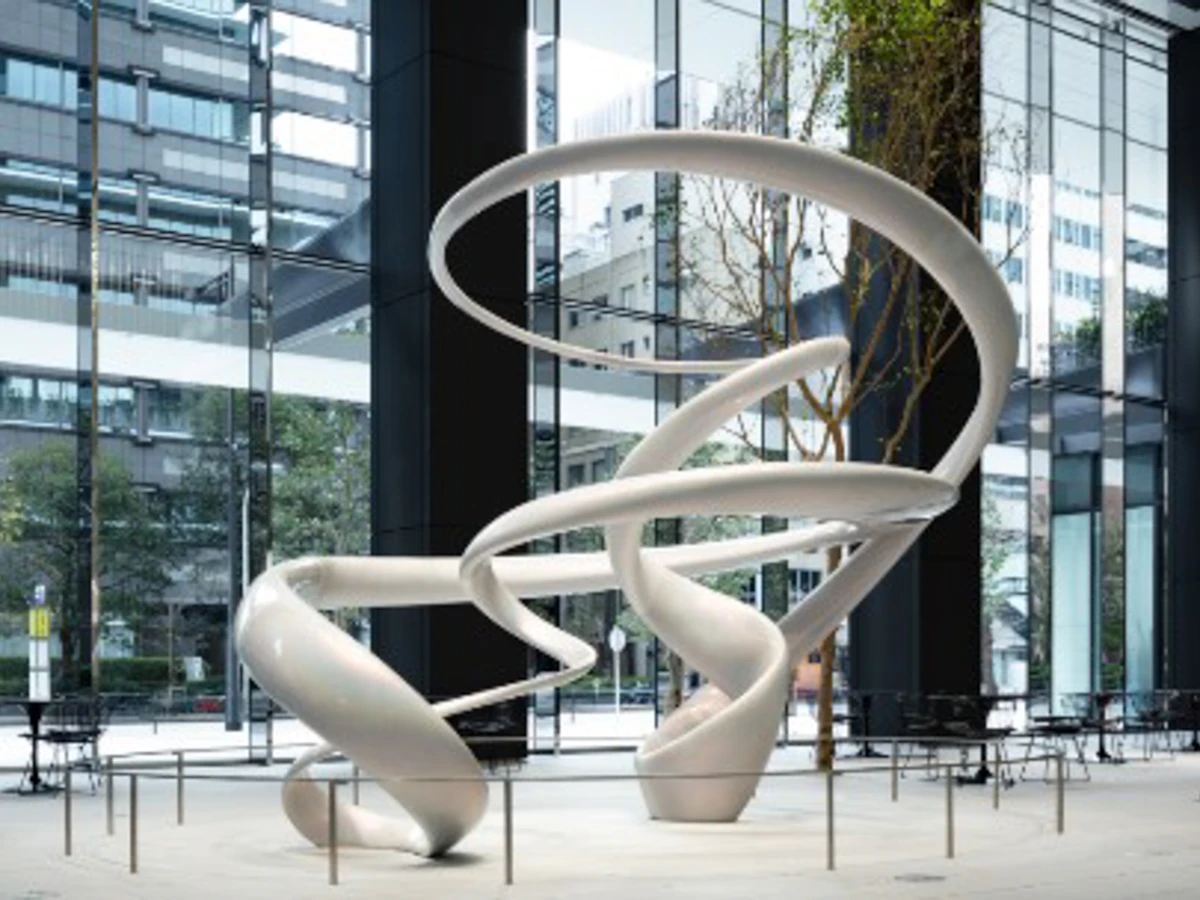
Office Lobby: Mariko Mori "Cycloid V" 2018, Sculpture
New Energy Network
A plant supplying electricity and heat to the Toranomon Hills complex is located on the third basement floor. To ensure efficient energy use, eco friendliness as well as disaster resiliance, the plant has a private power generator complex incorporating a gas cogeneration system and a highly efficient heat generation system that utilizes large-scale water tanks and waste heat utilization facilities. A back-up system capable of supplying electricity and heat in the wake of a disaster is also available, contributing to the safety and security of this global business center.
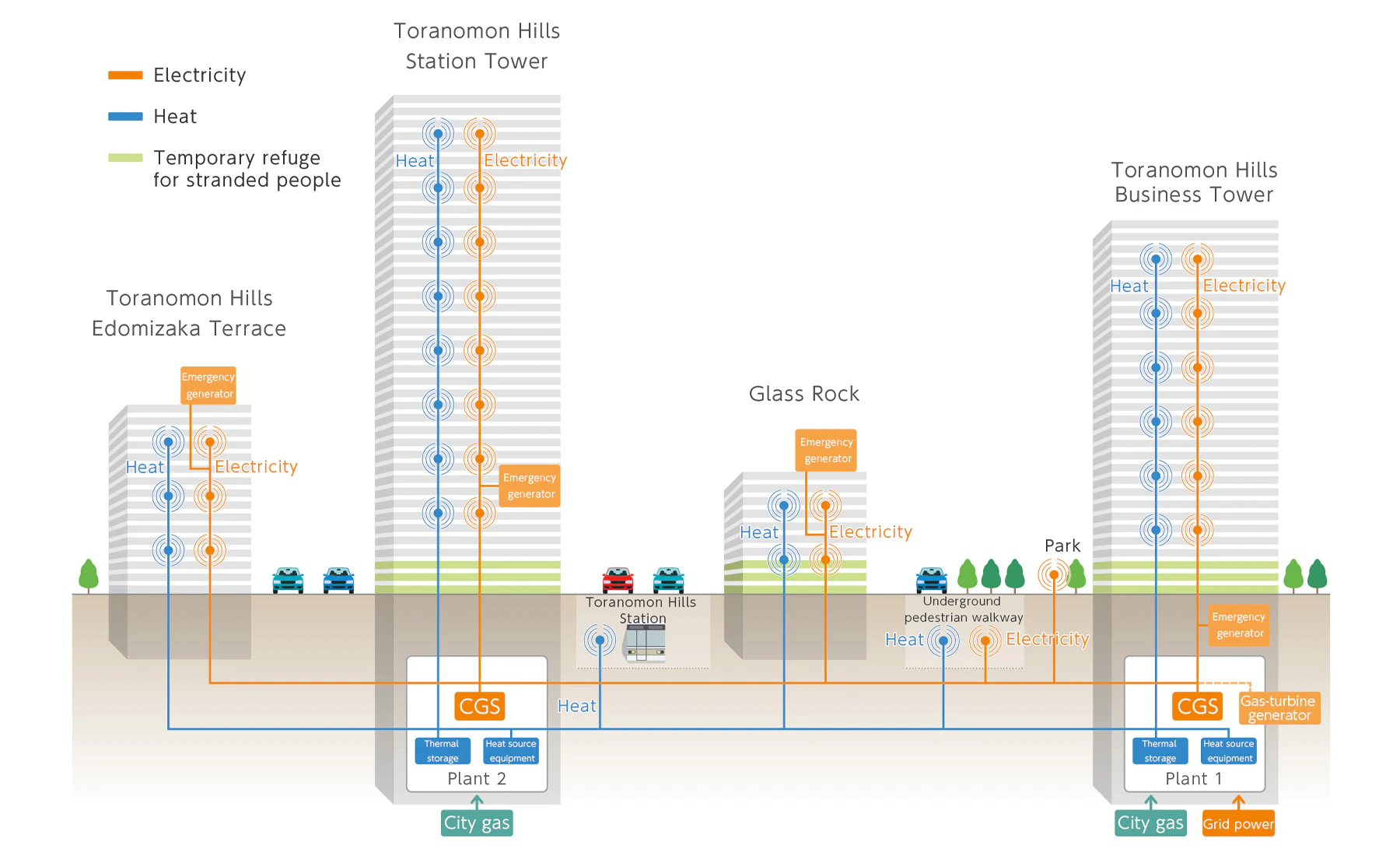
The plant supplies electricity and heat to the area
Architects and Designers建築家・デザイナー
The exterior was designed by German-born architect Christoph Ingenhoven. The tower was designed to integrate with Toranomon Hills Residential Tower, which was also designed by Ingenhoven. The two towers blend harmoniously, enhancing each other’s visibility as landmarks.
Data Sheetデータシート
Project Name | Toranomon 1-chome Type 1 City Redevelopment Project (A-1 Zone) |
Location | 1-17-1, etc., Toranomon, Minato-ku, Tokyo |
Building Ground Area | 10,065m² |
Building Site Area | 8,465m² |
Total Floor Area | 172,925m² |
Facilities | Office, Retail Facilities, Business Support Facilities, Parking, etc. |
Floor | 36 floors above ground/ 3 floors underground |
Height | 185m |
Green Coverage Rate | 14% |
Construction Started | February 2017 |
Construction Completion | January 2020 |
Structure | S, RC, SRC |
Architect | Mori Building Co., Ltd. |
Constructor | Obayashi Corporation |
Project Executor | Toranomon 1-chome District Urban Redevelopment Association |
Designer | ingenhoven associates (exterior), Wonderwall (interior), and others |

